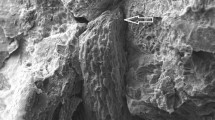Abstract
In the present work, hybrid composites were designed by using shredded Tetra Pak packages as food packaging wastes and wool yarn wastes as textiles wastes for potential alternative construction and building materials. Hybrid composites were fabricated by mixing different ratios (0, 5, 10, 15 and 20 wt%) of wool yarn wastes with shredded Tetra Pak wastes. Mechanical properties in terms of flexural, tensile strength, internal bonding (IB) in addition to the impact properties and physical properties in terms of thickness swelling (TS), water absorption (WA) and density of the fabricated composites were analyzed and compared with the properties of commercial wood particleboards. Results showed that when the ratios of wool yarn wastes increased to 15% in hybrid composites, modulus of rupture value reached 15.10 ± 1.01 MPa which is higher than that of particleboards (types P2, P4, and P6 as per the British Standards—BS). The highest IB strength was found to be 0.60 MPa for the hybrid composites with 10% wool yarn content, while IB values of the other samples reduced with increasing the amount of wool yarn wastes. Moreover, TS and WA of the fabricated hybrid composites were found to be better than commercial particleboards and they also encountered the minimum strength requirements in BS. Overall, we concluded that the developed hybrid composites from agro-industrial waste materials could be utilized as promising alternative source of raw materials to manufacture value added eco-friendly, advanced and sustainable structural applications such as wood panels.









Similar content being viewed by others
References
Hristozov D, Wroblewski L, Sadeghian P (2016) Composites B 95:82–95
Otto GP, Moisés MP, Carvalho G, Rinaldi AW, Garcia JC, Radovanovic E, Fávaro SL (2017) Composites B 110:459–465
Khanjanzadeh H, Bahmani AA. Rafighi A. Tabarsa T (2012) Afr J Biotechnol 11(31):8045–8050
Lykidis C, Grigoriou A, Barboutis I (2014) Wood Mater Sci Eng 9(4):202–208
Sassoni E, Manzi S, Motori A, Montecchi M, Canti M (2014) Energy Build 77:219–226
Madurwar MV, Ralegaonkar RV, Mandavgane SA (2013) Cons Buil Mater 38:872–878
Safiuddin MD, Jumaat MZ, Salam MA, Islam MS, Hashim R (2010) Int J Phys Sci 5(13):1952–1963
Suhaily SS, Jawaid M, Abdul Khalil HPS (2012) BioResources 7(3):4400–4423
Tetrapak global site. Tetra Pak International S.A. http://www.tetrapak.com/about-tetra-pak/the-company/facts-and-figures. Accessed 24 April 2015
TetraPak. Tetra Pak 2014 Sustainability update. Tetra Pak International S.A. http://www.tetrapak.com/environment/sustainability-report. Accessed 24 April 2015
Yılgör N, Kartal SN, Houtman C, Terzi E, Kantur A, Köse C, Piskin S (2014) BioResources 9(3):4784–4807
Lopes CMA, Felisberti MI (2006) J Appl Polym Sci 101(5):3183–3191
Nurhazwani O, Jawaid M, Tahir PMd, Juliana Abdul AH, Hamid S (2016) BioResources 11(1):306–323
Abdul Khalil HPS, Nur Firdaus MY, Jawaid M, Anis M, Rizduan R, Mohammad AR (2010) Mater Des 31(9):4229–4236
Abdul Khalil HPS, Nurul Fazita MR, Bhat AH, Jawaid M, Nik Fuad NA (2010) Mater Des 31(1):417–424
Paridah MT, Halip AH, El-Shekeil YA, Jawaid M, Othman A (2014) Measurement 56:70–80
Buyuksari U, Ayrilmis N, Avci E, Koc E (2010) Bioresource Technol 101(1):255–259
Bektas I, guler C, Kalaycioğlu H, Mengeloglu F, Nacar M (2005) J Compos Mater 39(5):467–473
Nadhari W, Hashim R, Hiziroglu S, Sulaiman O, Boon J, Salleh KM, Awalludin MF, Sato M, Sugimoto T (2014) Measurement 50(1):250–254
Rathke J, Sinn G, Konnerth J, Müller U (2012) Materials 5:1115–1124
312:2010, BS EN (2010) European Standardization Committee
Saari N, Hashim R, Sulaiman O, Hiziroglu S, Sato M, Sugimoto T (2014) Composites B 56:344–349
Nayeri MD, Tahir PMd, Jawaid M, Ashaari Z, Abdullah LC, Bakar ES, Namvar F (2014) BioResources 9(2):2372–2381
Moubarik A, Mansouri HR, Pizzi A, Allal A, Charrier F, Badia MA et al (2013) Composites B 44(1):48–51
Acknowledgements
Authors are thankful to the TUBITAK, Turkey for supporting this research finding through Grant No. 21514107-216.01-237755 and also extend their appreciation to EKOPAN and Yunsa Companies for providing required raw materials and Kastamonu Wood Industry for the fruitful discussions.
Author information
Authors and Affiliations
Corresponding author
Additional information
Publisher’s Note
Springer Nature remains neutral with regard to jurisdictional claims in published maps and institutional affiliations.
Rights and permissions
About this article
Cite this article
Hamouda, T., Hassanin, A.H., Saba, N. et al. Evaluation of Mechanical and Physical Properties of Hybrid Composites from Food Packaging and Textiles Wastes. J Polym Environ 27, 489–497 (2019). https://doi.org/10.1007/s10924-019-01369-3
Published:
Issue Date:
DOI: https://doi.org/10.1007/s10924-019-01369-3




